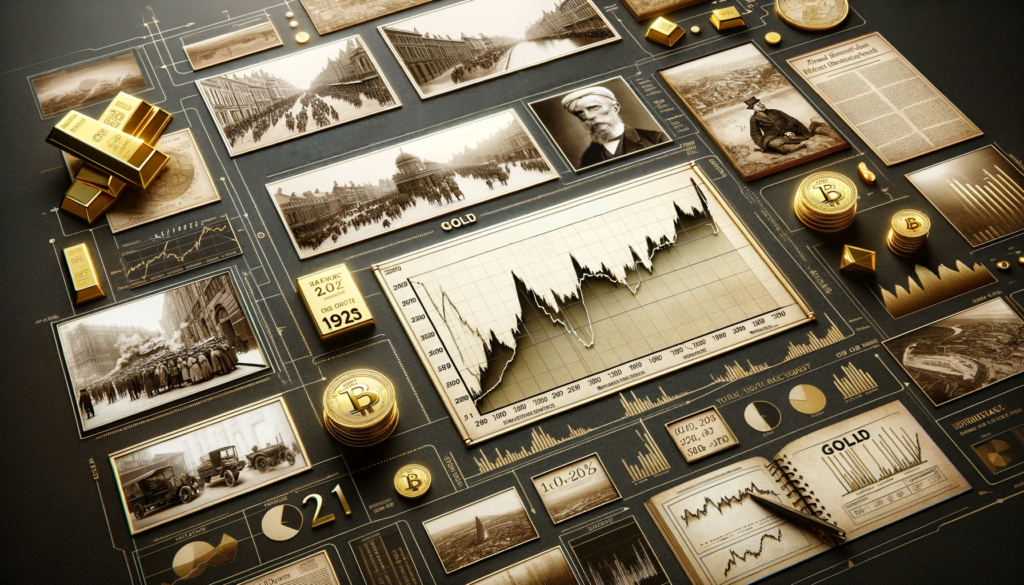Welcome to the World of Gold Trading!
Gold has long been a symbol of wealth and stability. In this guide, we delve into the intricacies of the gold price trend, exploring what drives changes in this precious metal’s value and how it impacts traders globally.
Gold: Where It’s Found, Why It’s Valuable, and Future Price Trends
Gold, more than just a shiny metal, holds a rich place in global finance. Treasured for centuries and found in regions like South Africa, China, Australia, and Russia, gold’s value lies in its rarity and unique properties like malleability. It’s historically been a medium of exchange and store of value. Why gold is valuable isn’t just about its physical attributes; its cultural significance and status as a financial asset play a part too. ‘Will gold price go down?’ is a common query. Gold prices are influenced by factors like economic indicators and global events, making predictions a careful affair.
Volatility of Gold Price
Gold’s price is subject to fluctuations influenced by a variety of factors. These include global economic stability, currency values, interest rates, geopolitical events, and market speculation. For instance, gold prices often rise during times of economic uncertainty or when inflation is high, as investors look for safe-haven assets. Additionally, changes in central bank policies, such as adjustments in interest rates, can also impact gold prices. The pricing of gold is largely determined by the London Bullion Market Association (LBMA), which sets the international standard for gold pricing. This price is used as a benchmark for pricing the majority of gold products and derivatives worldwide.
Historical Remarkable Events that Affected Gold Price

Gold prices have been influenced by various global events, each leaving a distinct mark on its value and trading practices. Two particularly notable events are the California Gold Rush in the 19th century and the financial crisis of 2008.
The California Gold Rush (19th Century)
The California Gold Rush, beginning in 1848, significantly impacted gold prices and its role in global economies. The influx of prospectors, or “Forty-Niners,” increased the gold supply, which temporarily lowered its overall value. However, this era also increased global interest and investment in gold, transforming it from a predominantly ornamental commodity to a key financial asset. This period marked a significant shift in the global perception and utilization of gold, influencing monetary systems around the world.
The Financial Crisis of 2008
During the 2008 financial crisis, gold’s status as a safe-haven asset was emphatically affirmed. As stock markets crashed, gold prices soared, reflecting its inverse relationship with other market securities. The crisis led to gold reaching a then all-time high in 2011, highlighting its value in times of economic uncertainty. This period reinforced gold’s role as a critical asset for hedging against financial market volatility and currency devaluation, showcasing its enduring importance in the financial landscape.
Trading Gold vs. Gold CFDs

Trading physical gold involves dealing with the actual metal, while trading gold CFDs allows traders to speculate on the price without owning the metal. CFDs offer higher liquidity and easier access but come with higher risks and leverage.
Pros and Cons of Trading Gold and Gold CFDs
Trading gold offers advantages like portfolio diversification, inflation protection, and being a safe-haven during economic uncertainties. However, it has drawbacks such as storage costs and relative illiquidity. Gold CFDs, on the other hand, provide higher liquidity, no need for physical storage, and the ability to speculate on price movements without owning the actual asset. The cons of gold CFDs include higher risks due to leverage, the potential for significant losses, and the complexities of CFD contracts.
Other Ways of Trading Gold
Apart from direct trading and CFDs, gold can be traded via futures contracts, gold ETFs, and mining company stocks. Each method offers different levels of exposure to the gold market.
Gold Futures and ETFs
Gold futures are contracts to buy or sell gold at a predetermined price on a specific future date, allowing traders to speculate on gold prices. Gold ETFs (Exchange Traded Funds) are investment funds traded on stock exchanges, holding assets in gold and gold-related products. Both futures and ETFs offer alternative ways to invest in gold without the need for physical storage.
Wrapping Up: Smart Trading and Caution Ahead

While gold trading can be part of a diversified investment strategy, it’s essential to be aware of the risks involved, especially in leveraged and speculative forms like CFDs. As always, traders should conduct thorough research and consult with financial advisors.
It’s also worth noting that gold is not the only asset known for its volatility. Other traded assets like cryptocurrencies, certain stocks (especially in the tech and biotech sectors), and commodities like oil can exhibit high volatility. Cryptocurrencies, for example, are known for their rapid price changes, driven by market sentiment, regulatory news, and technological developments. Similarly, oil prices can fluctuate significantly due to geopolitical tensions, supply-demand imbalances, and global economic conditions. Understanding the nature of these volatile assets and the factors influencing their prices is crucial for informed trading decisions.
Learn more about trading Forex, and indices.



